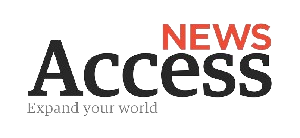Environment
Prospects for Green Hydrogen Production in Nigeria
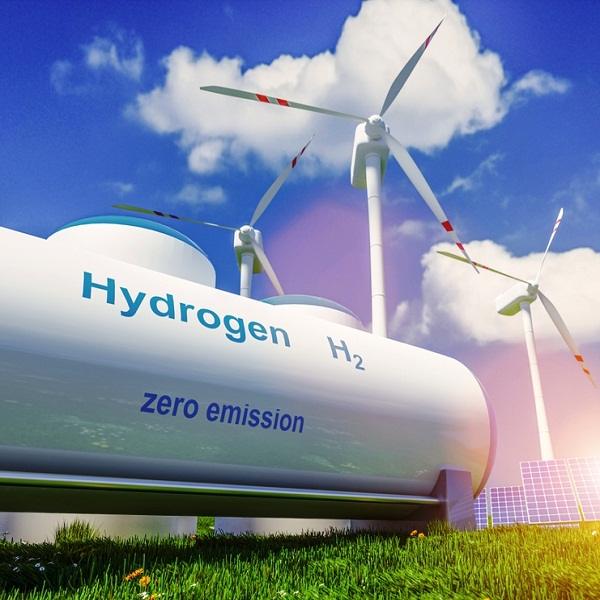
Abel B.S. Gaiya* and Abigail Adaramola
The global climate crisis has brought more emphasis on finding viable sustainability solutions. One key area is to drive solutions to decarbonize hard-to-abate sectors such as aviation, shipping, transportation, construction, steel, petrochemicals, and large-scale manufacturing industries. Green hydrogen is being championed as a way to achieve this.
In contrast to blue hydrogen, produced by splitting natural gas into hydrogen and carbon dioxide and using carbon capture and sequestration (CCS) technology to reduce carbon emissions, green hydrogen is produced from clean energy sources involving splitting water into hydrogen and oxygen through a process called electrolysis. Its zero carbon emissions profile has made it a preferred production method in achieving net zero emissions targets.
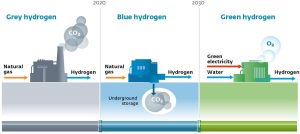
Figure 1: Differences between grey, blue, and green hydrogen
The green hydrogen space is quickly growing. Announcements of green hydrogen projects have accelerated since 2019, and as of June 2022, the projection for electrolyzer capacity by 2030 is at 175 gigawatts (GW). About 26 governments have committed to adopting hydrogen as a clean energy vector in their systems.
The majority of hydrogen projects since 2000 have been undertaken in European countries, with more projects there than all other regions combined. However, due to poorer solar resource quality, varying load curves, and limited space, the cost of producing green hydrogen is higher for European countries compared to China, India, and the United States.
Indeed, the European Union, despite high existing and new green hydrogen demand applications, is constrained in terms of renewable energy production. Therefore, hydrogen and ammonia import demand could largely be driven by Europe, Japan, and South Korea. Europe, Japan, South Korea, and Southeast Asia could account for about 65% of the import market by 2050.
It is partly as a result of these constraints that European countries have looked towards Africa as a potential source of green hydrogen supply. Germany, for instance, has taken the lead in supporting hydrogen development in Africa, and Angola is now set to become Germany’s first supplier of green hydrogen produced from renewable energy.

Figure 2: Technical potential for producing green hydrogen under $1.5/kg by 2050, in TWh
Africa is uniquely placed to be a key green hydrogen producer due to its abundant resources in renewable energies, low population density, and availability of non-arable land for large-scale deployment of renewable energy. Several African countries, especially around the Northern and Southern Tropics have great solar and wind resources for potential green hydrogen production. Morocco, for example, is forecasted to have the third lowest cost of green hydrogen production in 2050 globally and has the potential to meet Europe’s energy demand. The Sub-Sahara subregion has the technical potential for producing 754 terawatt-hours (TWh) of green hydrogen under $1.5/kg by 2050.

Figure 3: Global levelized cost of hydrogen (LCOH) in 2030 (top) and 2050 (bottom), incorporating costs of solar photovoltaic (PV), onshore wind, offshore wind,
electrolyser technology, weighted average cost of capital, land availability and water availability
Nigeria, however, has not figured prominently in the African green hydrogen race. It is neither a member of the inter-governmental Africa Green Hydrogen Alliance (AGHA) created in 2022 by North, Southern, and East African nations, nor a founding member of the private-sector-driven African Hydrogen Partnership (AHP) registered in Mauritius in 2020. The “five feasible hydrogen routes along existing trans-African highways and business centers” project envisioned by the AHP does not include West Africa.

Figure 4: African hydrogen routes connecting 15 capitals (metropolitan regions), several significant mining regions, and 11 major harbors, proposed by the African Hydrogen Partnership (AHP)
Announced, ongoing, and completed hydrogen projects in Africa are concentrated in North and Southern Africa (Figure 4). The AGHA 2022 report Africa’s Green Hydrogen Potential explicitly argues that North and Southern Africa will likely emerge as the key exporting hubs on the continent, partly because they comprise countries with complementary load profiles of wind and solar which contributes to having the highest potential for green hydrogen production to meet domestic and export demands. In contrast, in both East and West Africa, solar and wind profiles are less optimized for exports, making it likely that they would be more focused on domestic demand.
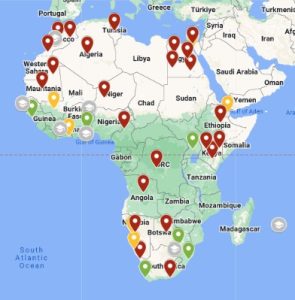
Figure 5: Map of hydrogen projects in Africa by 2022 based on publicly available information and news reports. Red icons indicate projects in study phase, gray icons are competency centers, green icons are completed projects, and yellow icons are ongoing projects.
Nigeria as a Potential Green Hydrogen Player
There is a case to be made that Africa’s biggest oil producers could invest heavily in green hydrogen as a means of decarbonizing their economies, strengthening regional hydrogen hubs, and diversifying their exports. In recognition of this, Germany, which is the largest economy in Europe, is expecting large quantities of green hydrogen to become climate neutral by 2045 and has opened hydrogen offices in strategically important countries including Nigeria and Angola.
West Africa in general could produce approximately 115,940 TWh per annum (TWh/a) of green hydrogen at a price of less than $2.63/kg, assuming no water constraints. The subregion has even produced a draft regional Green Hydrogen policy led by the ECOWAS (Economic Community of West African States) Centre for Renewable Energy and Energy Efficiency (ECREEE).
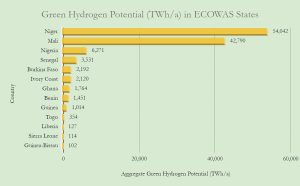
Figure 6: Green hydrogen potential (TWh/a) by ECOWAS member country
Although Nigeria ranks third in aggregate green hydrogen potential among ECOWAS member countries (Figure 5), it is a major oil producer, the largest economy in West Africa, and a key player in West African transition geopolitics. Unlike Mali and Niger (which account for 84% of the subregional potential), it is a Gulf of Guinea country with direct access to ports, shipping, and ocean transportation which would be valuable for participating in global hydrogen markets and for driving down hydrogen costs. This cost reduction could occur by encouraging demand from refining and chemical production concentrated in coastal industrial zones, already using hydrogen produced from fossil fuels.
Additionally, as a gas producer, Nigeria has an existing network of gas pipelines that could be potentially repurposed for transporting hydrogen. Further opportunities for transporting hydrogen across borders are offered by the West African Gas Pipeline (WAGP) network. This currently transports gas from Nigeria to neighboring countries such as Benin, Togo, and Ghana. It is the starting point for the Nigeria-Morocco Pipeline project, which could potentially be further extended to Europe.
The country also has several locations with a high maximum technical green hydrogen potential per area, unevenly distributed across its expanse (Figure 9) ‒ from as high as 38.4kWh/a*m2 to as low as 0.6kWh/a*m2, with a national total of 6,271TWh/a (about 5.4% of West Africa’s total).

Figure 7: Maximum technical hydrogen potential per area in West Africa. Note: The max technical hydrogen potential per area represents the theoretically producible amount of hydrogen of each region divided by the region area to provide a value independent of the region size. This amount is limited only by the land eligibility constraints and the available power is limited by energy intake (wind, solar radiation).
The cost of producing green hydrogen, however, remains high. The levelized cost of hydrogen (LCOH), which includes the cost of renewable energy, cost of electrolyzer (but does not include water constraints), ranges from $4/kg to $17.4kg, which is too high to be economical. This LCOE, however, is expected to decrease by 2050 to between $2/kg and $14/kg.
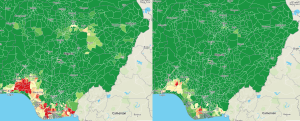
Figure 8: Levelized Cost of Hydrogen in 2020 (left) and 2050 (right).
The implication is that the areas with the highest technical maximum technical green hydrogen potential per area (within Kaduna, Kwara, Oyo and Borno states) are likely to have LCOH between $2/kg to $2.4/kg by 2050.
A Long Way to Go
Despite Nigeria’s potential for green hydrogen, many constraints remain. There is currently no national hydrogen policy to encourage private developers and investors into the Nigerian hydrogen space. Besides the ECREEE draft regional policy (which could serve as a benchmark for national policies) yet to be launched, the Renewable Energy & Energy Efficiency Association Alliance (REEEA-A) is supporting the harmonization of hydrogen policies developed by the Energy Commission of Nigeria (ECN), the Federal Ministry of Power and the Nigerian National Petroleum Corporation (NNPC).
Several companies have begun conducting feasibility studies, and various actors, including researchers at West African Science Service Centre on Climate Change and Adapted Land Use (WASCAL) headquartered in Accra, supported by the German government and responsible for West Africa’s first open-access geospatial resource for green hydrogen, the H2 Atlas-Africa. A German company, HPS AG, is having discussions on a pilot hydrogen plant in Nigeria, while domestic firms like Meiracopp Nigeria Ltd, New Cross Petroleum, and Dunatos Technology Consulting and Services are looking into blue or green hydrogen projects. Yet, no major concrete announcement has been made ‒ reflected in Ivoire Hydrogène’s 2022 mapping of hydrogen projects in
Africa ‒ as has been the case in AGHA member countries and Angola. Germany’s main international development agency, Deutsche Gesellschaft für Internationale Zusammenarbeit (GIZ), has established a hydrogen office in Nigeria and appears willing to fund feasibility studies, but no major financing deal has been struck within the Nigerian green hydrogen space.
Furthermore, many of Nigeria’s gas pipelines need revamp, and hydrogen production would require the development of new pipelines. Additionally, as a small and lightweight gas molecule, hydrogen requires special equipment and procedures to handle it. Hydrogen is so small it can diffuse into some materials, including some types of iron and steel pipes, and increase its chance of failure. It also escapes more easily through sealings and connectors than larger molecules such as natural gas. Therefore, proper regulations and health and safety codes must be in place to mitigate hazards and risks.
There is no grid-connected solar plant in the country currently, nor an adequately functioning offshore or onshore wind power plant. Nigeria has some way to go in piloting utility-scale renewable energy projects that can form the foundation for the production of green hydrogen. It is partly as a result of this, but mainly due to its gas-producing capacity, that many ‒ especially those in the public sector ‒ argue that grey hydrogen should be the focus of a Nigerian hydrogen sector, at least in the short-to-medium term.
At the moment, Nigeria needs to put in place policies and incentives, financing for pre-investment activities and pilot projects, intensify support for utility-scale solar and wind power (the largest so far was the failed 10 MW wind project in Katsina State) pilot projects, and support for research, development, and innovation in green hydrogen technologies that will help to reduce costs and establish novel methods (such as seawater-based electrolysis) for avoiding potential water use conflicts arising from the use of surface freshwater and groundwater for green hydrogen.
Abel B.S. Gaiya* is the Manager, Energy Access, at Clean Technology Hub.
Abigail Adaramola is a Junior Research Associate and Lead, Hydrogen Portfolio at Clean Technology Hub.
Environment
National Park advocates carbon reduction for climate action
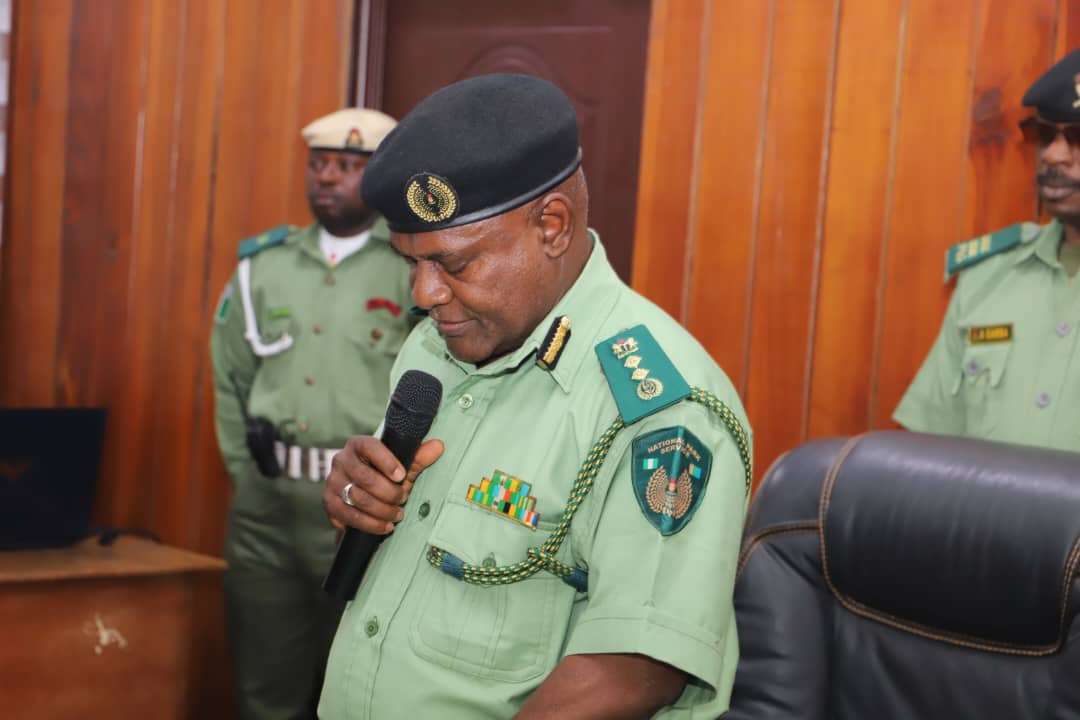
The National Park Service (NPS) has assured Nigerians of its ongoing efforts to mitigate climate change through carbon reduction.
Dr Ibrahim Goni, the Conservator-General (C-G) of the NPS, made this commitment in an interview with the News Agency of Nigeria (NAN) in Abuja on Wednesday.
The C-G stated that the approval for the establishment of 10 new national parks in the country would contribute to carbon reduction.
“The seven national parks provide a total area of vegetation of 20,000 square kilometres, and we are confident that it would sequestrate carbon by 4.8 million parts.
“This means that with the introduction of the new 10 national parks, carbon dioxide is going to be sequestrated”.
Goni further advised residents to engage in afforestation to reclaim lands that have been degraded due to erosion.
He commended the Federal Government for its efforts in carbon mediation and for planting 25 million trees to cushion the effects of climate change in the country.
Goni also expressed satisfaction with the federal government’s tree-planting efforts, describing it as a huge step towards conserving the country’s natural resources.
“In 2020, the federal government approved the establishment of 10 new national parks”.
NAN reports that the 10 new national parks are located in Alawa National Park in Niger, Apoi and Edumenun National Parks in Bayelsa, Galgore National Park in Kano state, and Hadejia Wetland National Park in Jigawa.
Others are Kampe National Park in Kwara, Kogo National Park in Katsina, Marhi National Park in Nasarawa state, Oba Hill National Park in Osun and Pandam National Park in Plateau.
Environment
FG unveils national environmental battery control regulations

The Federal Government has unveiled the National Environmental (Battery Control) Regulations 2024 to prevent and minimise pollution and waste emanating from batteries in Nigeria.
The News Agency of Nigeria (NAN) reports that the regulations seek to ensure environmentally sound management of used batteries in the country.
The Minister of Environment, Balarabe Lawal, stated this at the unveiling of the document on Thursday in Abuja.
He said that the regulations also sought to address the challenges of waste battery management in Nigeria.
Lawal said it was in line with the provisions and recommendations of the Basel and Bamako Conventions, and other related guidelines for the Environmentally Sound Management (ESM) of hazardous waste.
The minister was represented by Mr Usman Bokani, Director, Pollution and Public Health, National Environmental Standards and Regulations Enforcement Agency (NESREA).
He said that batteries, particularly those used in renewable energy, telecommunication and automotive sectors, were critical to Nigeria’s economic development.
Lawal said that batteries contained hazardous materials such as lead, mercury, cadmium, and lithium amongst others.
He said batteries when improperly disposed of, could lead to severe health conditions including cancer, kidney damage and neurological disorders.
Environment
NiMet forecasts 3-day sunshine, haziness from Monday
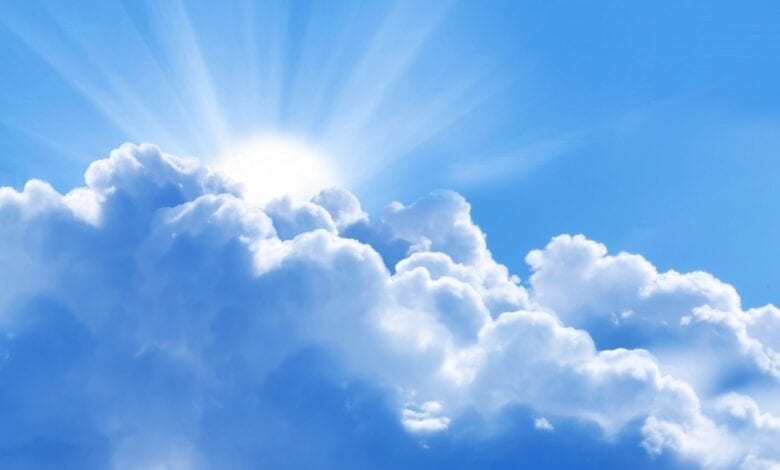
NiMet forecasts 3-day sunshine, haziness from Monday
The Nigerian Meteorological Agency (NiMet) has predicted sunshine and haziness from Monday to Wednesday across the country.
NiMet’s weather outlook released on Sunday in Abuja forecasts sunny and hazy conditions on Monday over parts of Yobe, Jigawa, Kano and Katsina states throughout the forecast period with chances of morning thunderstorms over parts of Taraba state.
“However, localised thunderstorms are expected over parts of Kaduna, Bauchi, Zamfara, Kebbi and Taraba states.
“Cloud patches with sunshine intervals are expected over the North Central region with chances of localised thunderstorms over parts of the Federal Capital Territory, Kwara, Benue and Kogi states during the morning hours.
“In the afternoon/evening period, localised thunderstorms are anticipated over parts of the Federal Capital Territory, Plateau, Nasarawa, Benue, Kogi, Kwara and Niger states,” it said.
The agency envisaged cloudy skies with intervals of sunshine over the Inland states of the South and the Coast.
It anticipated chances of localised thunderstorms over parts of Ogun, Oyo, Edo, Delta, Bayelsa, Cross River and Akwa Ibom states during the morning hours.
NiMet predicted localised thunderstorms over parts of Imo, Abia, Ondo, Osun, Ekiti, Oyo, Rivers, Edo, Cross River, Akwa Ibom, Lagos, Bayelsa, Rivers and Delta states later in the day.
According to him, sunny skies with few patches of cloud are anticipated over the northern region during the morning hours on Tuesday.
“Later in the day, localised thunderstorms are expected over parts of Kaduna, Taraba, Zamfara and Kebbi states. The North Central region is expected to be cloudy with sunshine intervals.
“Also, with chances of localised thunderstorms over parts of Kogi, Nasarawa, Benue and the Federal Capital Territory during the morning hours,” it said.
NiMet predicted localised thunderstorms over parts of Kogi, Plateau, the Federal Capital Territory, Niger, Kwara, Benue and Nasarawa states later in the day.
It anticipated cloudy skies with intervals of sunshine over the Inland of the South and the Coast with chances of isolated thunderstorms over parts of Enugu, Imo, Anambra, Ebonyi, Rivers, Cross River and Akwa Ibom states in the morning hours.
It forecast localised thunderstorms over parts of Imo, Abia, Enugu, Anambra, Edo, Ondo, Oyo, Osun, Ogun, Ekiti, Delta, Rivers, Cross River, Akwa Ibom, Bayelsa and Lagos
states.
The agency envisaged a sunny atmosphere with patches of cloud over the northern region during the morning hours on Wednesday.
“Later in the day, localised thunderstorms are expected over parts of Taraba and Kaduna states. Cloudy skies with intervals of sunshine are expected over the North Central region during the morning hours.
“In the afternoon/evening period, localised thunderstorms are anticipated over parts of the Federal Capital Territory, Nasarawa, Plateau and Niger states. A cloudy atmosphere is expected over the southern region during the morning hours.
“Later in the day, thunderstorms are expected over the entire region,” it said.
NiMet urged the public to take adequate precautions as strong winds might precede the rains in areas where thunderstorms were likely to occur.
The agency advised the Airline operators to get updated weather reports and forecasts from NiMet for effective planning in their operations.
(NAN)
-
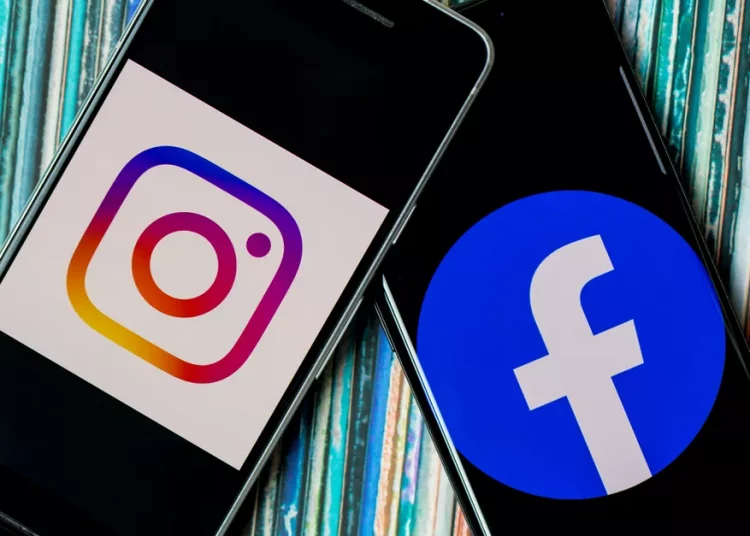
 Headlines4 years ago
Headlines4 years agoFacebook, Instagram Temporarily Allow Posts on Ukraine War Calling for Violence Against Invading Russians or Putin’s Death
-

 Headlines4 years ago
Headlines4 years agoNigeria, Other West African Countries Facing Worst Food Crisis in 10 Years, Aid Groups Say
-
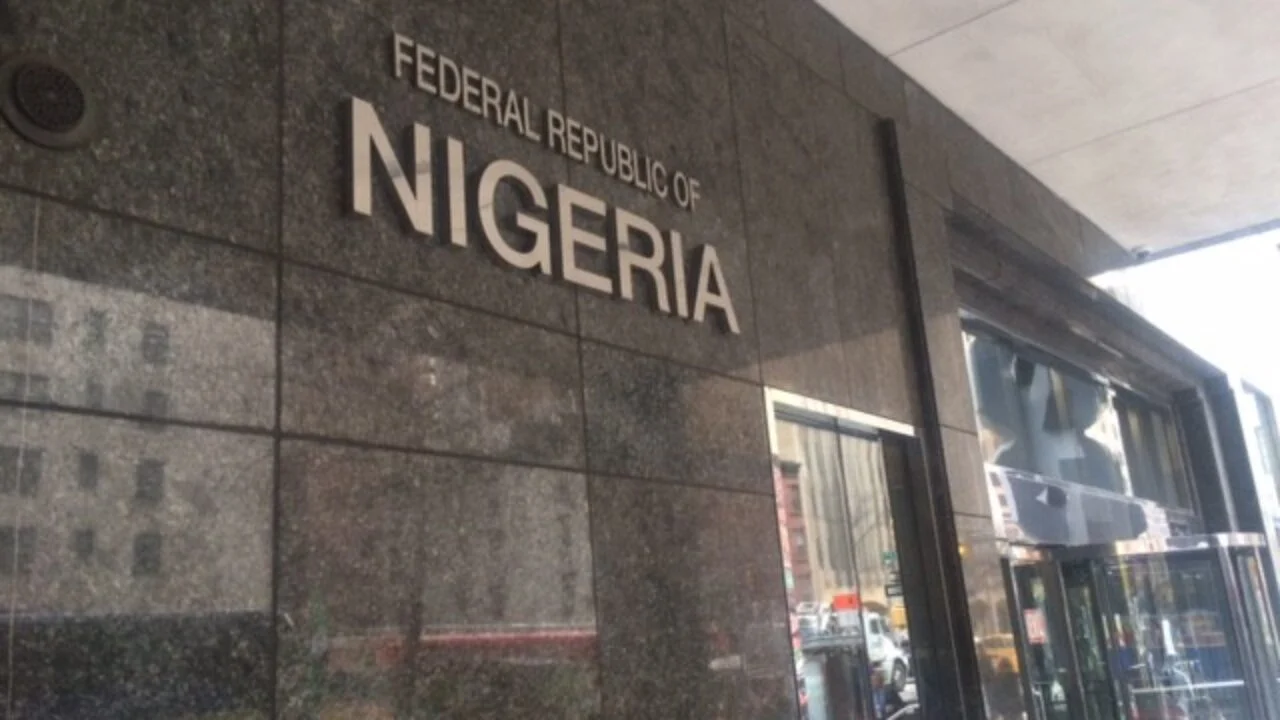
 Foreign4 years ago
Foreign4 years agoNew York Consulate installs machines for 10-year passport
-

 News1 year ago
News1 year agoZero Trust Architecture in a Remote World: Securing the New Normal
-

 Entertainment3 years ago
Entertainment3 years agoPhyna emerges winner of Big Brother Naija Season 7
-

 Headlines2 years ago
Headlines2 years agoNigeria Customs modernisation project to check extortion of traders
-

 Entertainment2 years ago
Entertainment2 years agoMovie download platform, Netnaija, announces closure
-
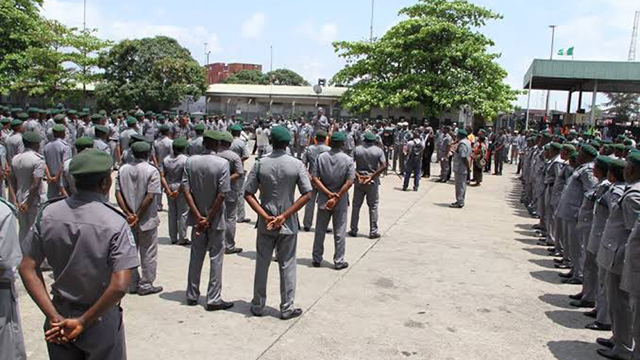
 Economy2 years ago
Economy2 years agoWe generated N30.2 bn revenue in three months – Kano NCS Comptroller
